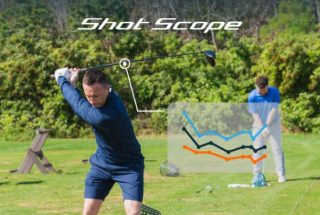Grants support six new turfgrass research projects at seven universities
Lawrence, Kan. (May 15, 2018) – Research grants from the Golf Course Superintendents Association of America (GCSAA) are supporting six new research projects this year at seven universities across the country (one project is a collaboration between the University of Minnesota and the University of Wisconsin).
The projects, which were selected by a committee that included two members of the GCSAA board of directors, superintendents, university researchers and the research director of the USGA Green Section, will receive a total of $112,500 from a block grant to GCSAA by the Environmental Institute for Golf, GCSAA’s philanthropic organization. An additional five projects are continuing to receive support from funds allocated in 2017.
The new research projects are:
• Identifying the mechanisms behind imidacloprid failures in controlling white grubs in turfgrass; Benjamin McGraw, Ph.D., Pennsylvania State University. Funded through the EIFG’s Dr. Michael J. Hurdzan Endowment, which supports environmental research on golf courses.
• How do various wetting agents affect water movement and retention in sand-based putting green profiles?; Douglas Karcher, Ph.D., and Michael Richardson, Ph.D, University of Arkansas. Funded through the EIFG’s Mark Kizziar Research Grant, which supports work that will help produce well-conditioned golf courses while minimizing consumption of water.
• Modeling vertical water distribution and surfactant degradation; Bill Kreuser, Ph.D., University of Nebraska-Lincoln. Co-funded by the Nebraska Turfgrass Association and the University of Nebraska-Lincoln.
• Surveying herbicide resistance in annual bluegrass populations of golf course turf; James T. Brosnan, Ph.D., University of Tennessee. Co-funded by the University of Tennessee.
• Assessing the impact of bentgrass disease tolerance on fungicide management of dollar spot; James Murphy, Ph.D., and Bruce Clark, Ph.D., Rutgers University. Co-funded by the GCSA of New Jersey Foundation.
• Dollar spot control using urea and iron sulfate; Paul Koch, Ph.D., Doug Soldat, Ph.D., Brian Horgan, Ph.D., and Sam Bauer, University of Minnesota and University of Wisconsin. Co-funded by the Wisconsin GCSA and Minnesota GCSA.
About GCSAA and the EIFG
The Golf Course Superintendents Association of America (GCSAA) is a leading golf organization in the United States. Its focus is on golf course management, and since 1926 GCSAA has been the top professional association for the men and women who manage golf courses in the U.S. and worldwide. From its headquarters in Lawrence, Kan., the association provides education, information and representation to nearly 18,000 members in more than 78 countries. The association’s mission is to serve its members, advance their profession and enhance the enjoyment, growth and vitality of the game of golf. Visit GCSAA at gcsaa.org, or find us on Facebook or Twitter. Visit our industry-leading magazine at GCMonline.com.
The Environmental Institute for Golf is the philanthropic organization of the GCSAA. Its mission is to foster sustainability through research, awareness, education, programs and scholarships for the benefit of golf course management professionals, golf facilities and the game. Visit EIFG at eifg.org, or find us on Facebook or Twitter.
Contact:
Angela Hartmann
Associate Director, Communications
Phone: 800-472-7878, ext. 3647 or 785-393-1361 (cell)
ahartmann@gcsaa.org



